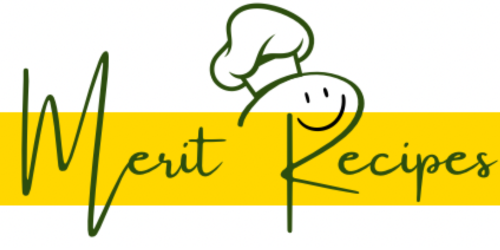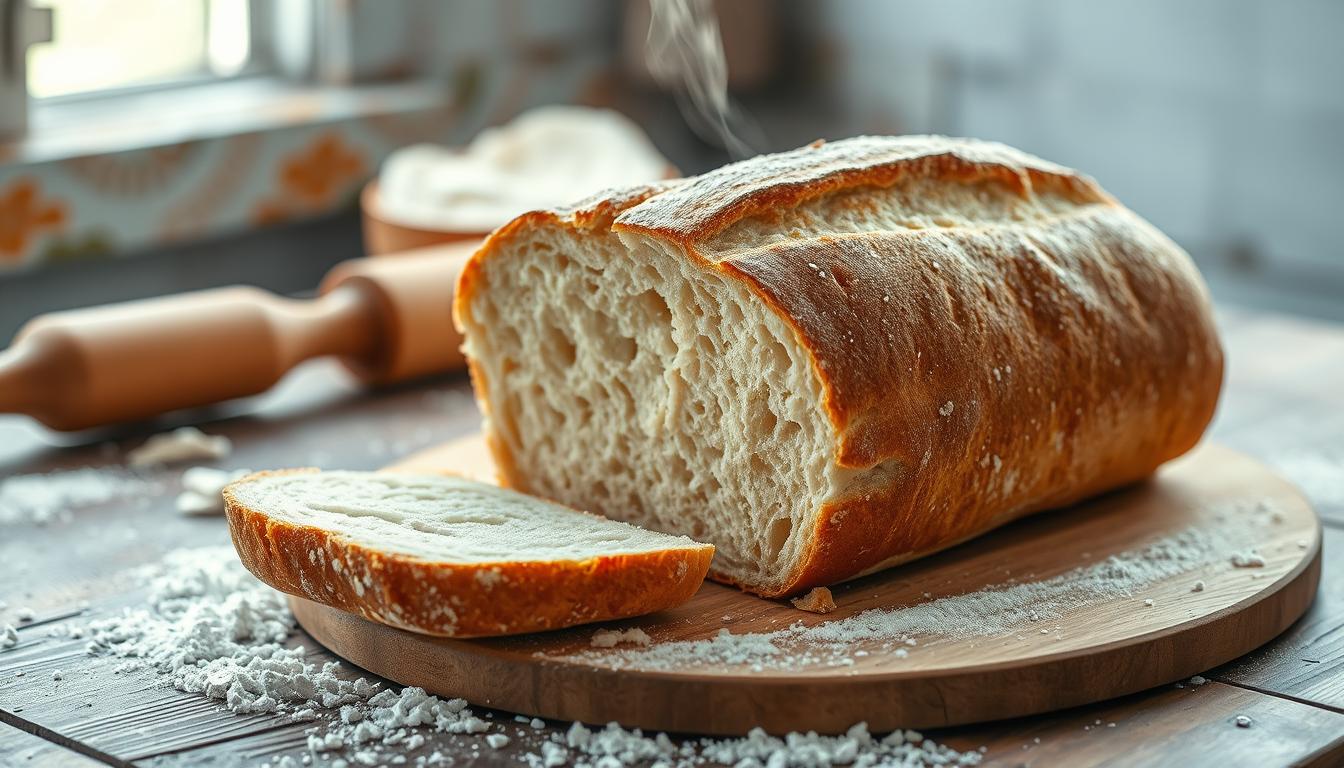French Bread Recipe : Ever wondered how to make your kitchen feel like a Parisian bakery? The secret to perfect French bread is simple. It’s about the passion you put into baking. Making homemade French bread is more than just ingredients. It’s about creating a special experience that takes you to France with every bite.
This recipe will take you on a journey to making bread like a pro. You’ll learn how to make bread that looks and tastes like it’s from a French bakery. With a few simple ingredients and some techniques, you’ll find the joy of baking.
Understanding the Art of French Bread Making
French bread is a culinary masterpiece. It combines simple ingredients with amazing technique. Your journey into bread baking will reveal the secrets of making authentic, delicious loaves.
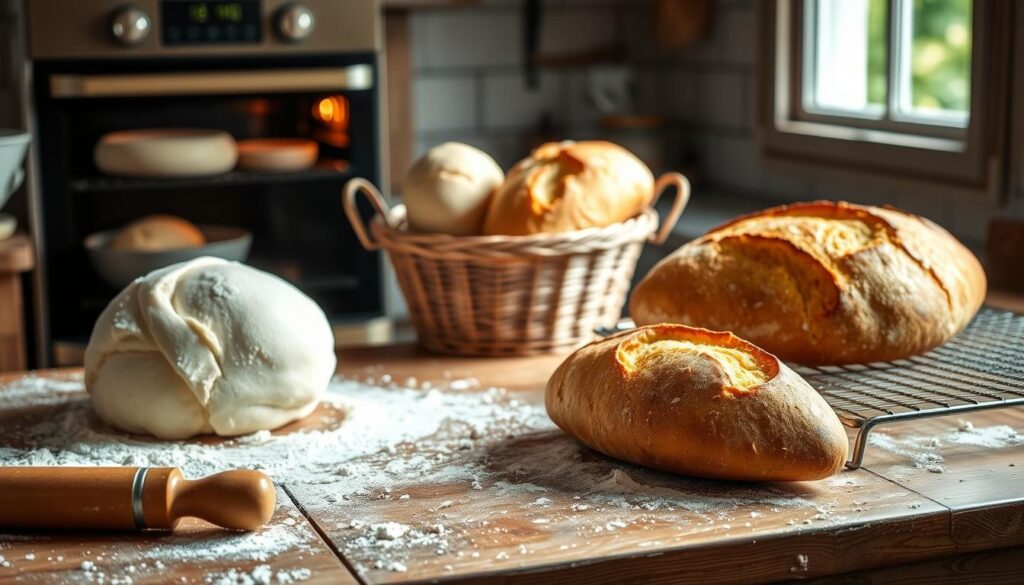
Exploring French bread shows a world of precise craftsmanship. The art of making perfect bread is more than just ingredients. It’s a mix of science, skill, and passion.
What Makes French Bread Special
French bread is special for many reasons:
- Crispy exterior with a golden-brown crust
- Soft, airy interior with large, irregular air pockets
- Minimal ingredients creating maximum flavor
- Distinctive texture achieved through specialized techniques
Essential Bread Baking Equipment
To master crusty bread science, you’ll need specific equipment:
| Equipment | Purpose |
|---|---|
| Baking Stone | Creates crisp bottom crust |
| Lame | Allows precise dough scoring |
| Steam Tray | Generates moisture for crust development |
| Proofing Basket | Supports dough shape during rising |
French Bread Recipe : The Science Behind Crusty Bread
Understanding crusty bread science changes your baking. The magic comes from precise temperature control and moisture management. High heat and steam make the crust crisp while keeping the inside soft and fluffy.
* »Bread baking is an art where science meets passion »* – Professional Baker’s Wisdom
By mastering these techniques, you’ll make French bread that rivals artisan bakeries. You’ll bring authentic flavor to your kitchen.
Key Ingredients for Perfect French Bread
Making authentic French bread begins with knowing its essential ingredients. The right mix of ingredients turns simple items into a culinary work of art.
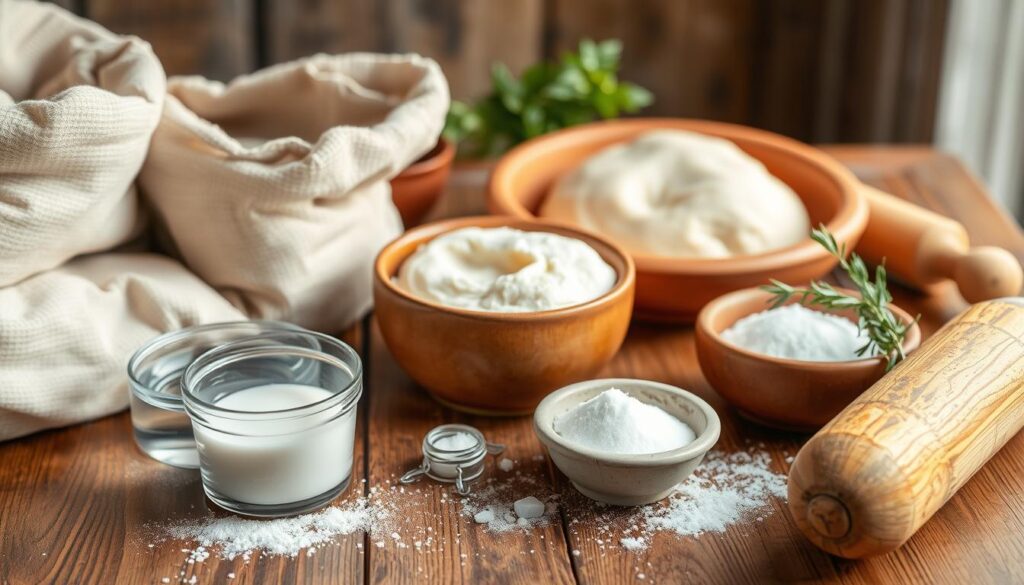
Your bread flour is the base of a great French loaf. Professional bakers choose bread flour for its high protein. This creates the perfect texture and structure.
Bread flour makes your bread chewy and rise well. It’s different from all-purpose flour because it has more gluten. This gluten is what makes your bread so special.
- Bread flour: 6-6.5 cups (720-780 grams)
- Instant dry yeast for bread: 1 tablespoon (9 grams)
- Kosher salt: 2 teaspoons (12 grams)
- Warm water: 2.5 cups (590 grams)
- Sugar: 1 tablespoon (12 grams)
Choosing the right yeast is key. Instant dry yeast is reliable for rising. Make sure the water is between 100-110 degrees Fahrenheit when activating the yeast.
« The secret of great bread lies not just in ingredients, but in understanding how they interact. » – French Baking Tradition
| Ingredient | Quantity | Purpose |
|---|---|---|
| Bread Flour | 6-6.5 cups | Structure and texture |
| Instant Yeast | 1 tablespoon | Rising and fermentation |
| Kosher Salt | 2 teaspoons | Flavor enhancement |
| Warm Water | 2.5 cups | Hydration and yeast activation |
Salt does more than add flavor. It helps gluten develop and controls yeast. This ensures your French bread has a golden crust and a soft inside.
The Classic French Bread Recipe
Making authentic French bread needs precision and passion. Your journey starts with learning key techniques. These turn simple ingredients into a culinary masterpiece.
Preparing the French Bread Starter (Poolish)
The French bread starter, or poolish, is key for deep flavors. You’ll need:
- ½ cup bread flour
- ¼ cup warm water
- ⅛ teaspoon active dry yeast
Mix these until you get a sticky, wet mix. Let it rest at room temperature for 12-14 hours. This allows wild yeasts to create complex flavors.
Crafting the Main Bread Dough Recipe
Your bread dough recipe turns the poolish into a delicious loaf. Mix the following:
| Ingredient | Quantity |
|---|---|
| Bread Flour | 3 cups |
| Warm Water | 1¼ cups |
| Salt | 1½ teaspoons |
| Prepared Poolish | All of previous mixture |
Mastering Kneading Techniques
Kneading is key for developing gluten and the perfect texture. You have two main methods:
- Hand Kneading: Work the dough for 15-20 minutes until it’s smooth and elastic
- Stand Mixer: Knead for 5-10 minutes with a dough hook
« The secret to great bread lies in understanding your dough’s texture and development. » – Professional Baker’s Wisdom
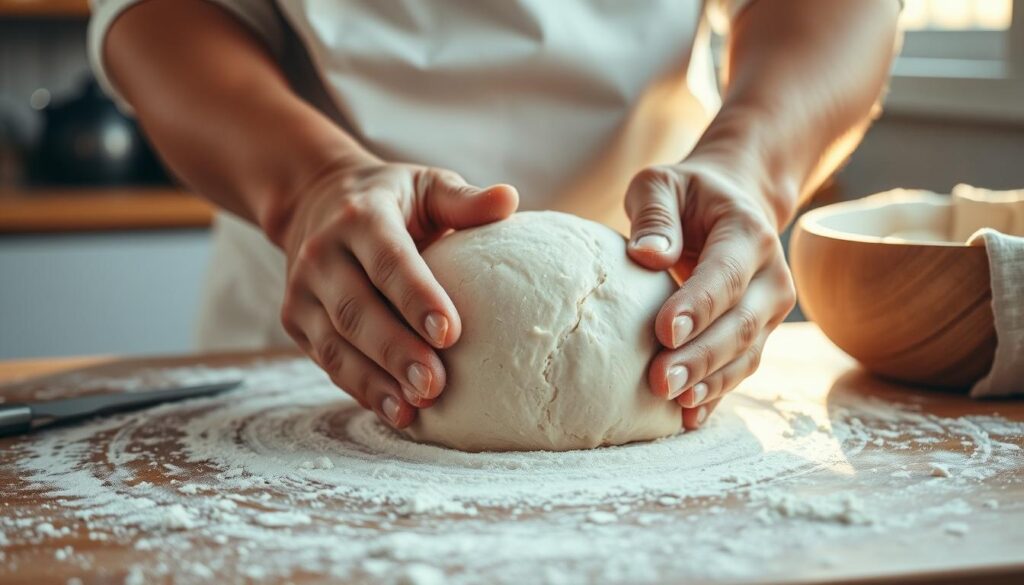
Proper kneading creates gluten networks. These give French bread its chewy inside and crisp crust.
French Bread Recipe : Mastering the Rising Process
Bread dough rising is a magical transformation. It turns simple ingredients into a culinary masterpiece. Understanding the fermentation techniques behind proofing bread can make you a better baker.
The rising process involves several critical stages. These stages develop flavor and texture. Your bread’s success depends on creating the right environment for fermentation.
- First rise (bulk fermentation): 1-2 hours at room temperature
- Second rise: 45-90 minutes after shaping
- Ideal temperature range: 70-75°F
« Great bread is all about patience and understanding the dough’s natural rhythm. » – Professional Baker’s Wisdom
Key factors for successful bread dough rising include:
- Consistent warm temperature
- Protection from drafts
- Proper humidity
When proofing bread, watch for these signs of perfect fermentation:
- Dough doubles in size
- Surface becomes smooth and slightly domed
- Gentle finger press leaves a slight indentation
Professional bakers often use cold fermentation techniques. This method develops deeper flavors. By letting your dough rest in the refrigerator for 12-18 hours, you’ll create more complex taste profiles and improve overall bread texture.
Shaping Your French Bread
Making perfect French bread is more than just mixing ingredients. It needs precision, technique, and knowing how shapes affect the bread. The look and feel of your bread depend on how you shape it.
Professional bakers say each shape gives the bread its own special qualities. The art of making a baguette is about creating tension on the surface. This helps get a crispy outside and a soft inside.
Traditional Baguette Formation
To make a classic baguette, follow these steps:
- Divide your dough into equal parts
- Stretch the dough into a rectangle
- Roll it tightly for a smooth surface
- Make the loaf longer while keeping it even
Creating Batards and Boules
There are many bread shapes, each with its own texture and look:
| Bread Shape | Characteristics | Best Used For |
|---|---|---|
| Batard | Shorter than baguette, wider profile | Sandwiches, dinner parties |
| Boule | Round, compact loaf | Family-style serving, rustic presentations |
Scoring Patterns and Techniques
Bread scoring patterns are more than just for looks. They help control how the bread grows while baking. Here are some key techniques:
- Simple straight cuts for traditional baguettes
- Diagonal slashes for artistic presentation
- Intricate patterns for professional-looking loaves
« The beauty of French bread lies in its simplicity and the baker’s skill in shaping. » – French Baking Masterclass
French Bread Recipe : Professional Baking Methods
Professional French bread baking turns home cooking into an art. Steam baking is key for that golden crust and oven spring every baker wants.
Your kitchen can use professional methods with the right approach. It’s all about how moisture affects bread while baking.
« Great bread isn’t just about ingredients, it’s about technique. » – Professional Baker’s Wisdom
Professional Steam Injection Techniques
- Use a cast-iron skillet with water for creating steam
- Spray water directly into the oven during initial baking
- Place ice cubes on a preheated baking sheet
- Utilize a specialized spray bottle for precise water distribution
| Technique | Steam Duration | Oven Spring Impact |
|---|---|---|
| Water Pan Method | First 10 minutes | High |
| Ice Cube Method | First 5-7 minutes | Medium |
| Direct Spraying | Initial 3-4 minutes | Moderate |
Professional bakers know steam is essential for a crisp, golden crust and soft inside, just like French bread.
Getting good at these methods takes time. You aim to make your oven act like a pro’s, for that perfect crust and soft inside.
Temperature and Timing Insights
- Preheat oven to 450°F (232°C)
- Create steam right after putting in the bread
- Keep it steamy for the first 10 minutes
- Then, reduce the steam for the rest of the bake
Using these pro techniques will make your home baking better. You’ll get loaves that taste like they came from a bakery.
French Bread Recipe : Creating the Perfect Crust
Making a crispy bread crust is an art that needs precision and knowledge of baking science. The secret to great French bread is mastering steam baking and controlling oven temperature. This requires expert skill.
To make the perfect crust, several key elements are needed. These elements turn regular bread into a special culinary treat.
Steam Baking Techniques
Steam is key for a crispy crust. Bakers use different ways to add moisture early in baking:
- Water pan method: Place a metal tray filled with boiling water at the oven’s bottom
- Spray bottle technique: Mist the oven walls with water every few minutes
- Ice cube approach: Toss ice cubes onto a preheated baking sheet
Temperature Control Tips
Controlling temperature is crucial for a crispy crust. The best oven temperature for bread is between 425°F and 475°F.
| Baking Stage | Temperature | Steam Duration |
|---|---|---|
| Initial Baking | 450°F | 10-15 minutes |
| Final Baking | 425°F | No steam |
« The crust is the soul of French bread – crisp, golden, and inviting. » – French Baking Master
Remember, consistent oven temperature and smart steam use are the secrets to a top-notch crispy crust. Try these methods to improve your bread baking.
French Bread Recipe : Storage and Serving Suggestions
Keeping French bread fresh is key. Enjoy your loaf within 24 hours for the best taste. But, with the right storage, you can keep it fresh longer.
Here are some tips for storing and serving French bread:
- Room temperature storage: Keep bread in a paper bag for 1-2 days
- Refrigeration: Not recommended as it accelerates staling
- Freezer storage: Wrap tightly in plastic wrap for up to one month
Pro tip: To revive day-old bread, sprinkle with water and warm in a 350°F oven for 5-7 minutes.
| Storage Method | Duration | Best Practice |
|---|---|---|
| Countertop (Paper Bag) | 1-2 days | Keep at room temperature |
| Freezer | Up to 1 month | Wrap in plastic, then foil |
| Reheating | 5-7 minutes | Oven at 350°F |
The secret to maintaining French bread’s crispy crust is minimal handling and proper storage.
For serving, slice the bread at an angle. This makes it perfect for spreads and looks great. Try it with soft cheeses, olive oil, or as a side to soups and salads.
Conclusion
Your journey to master French bread is more than a recipe. It’s a skill that connects you to bakers through the ages. With the right ingredients and techniques, you can make homemade French bread that’s as good as the pros.
This guide has given you bread baking tips to help you experiment with confidence. Remember, getting better takes time and practice. Every loaf you make brings you closer to mastering French bread.
Creating homemade French bread is a rewarding experience. Start with a basic recipe and then add your own twist. Share your bread with loved ones and don’t worry about mistakes. Every baker’s path is unique, and your love for baking will grow with each loaf.
We welcome you to the community of home bakers who love making authentic French bread. Your kitchen is now a place of delicious discovery. Keep baking, stay curious, and enjoy the tasty results of your journey.
